New battery new alternator still not charging? Check the wirings, fuse, voltage regulator, serpentine belt, and even the new battery. It is more likely one of these parts is responsible for the mishap.
You just got a new alternator and battery for your car, and you decide to take your family out on a ride. You switch on your vehicle, and it’s not coming on. You’re scared, disgusted, and annoyed after finding that your car’s problem not starting is from your battery not charging at all. You ask yourself why? What could be wrong? It turns out that there are a few things you can do to diagnose the problem. Or you could’ve got a Battery Tender, to begin with.
In this blog post, we’ll take a look at several reasons why your car battery won’t charge and how to diagnose and fix it in the simplest way possible. Let’s look at them!
Taking your car to a repair shop? Don’t forget to ask them for your free loaner car. Read my post on how to clean battery terminals and restore a corroded battery here.
New Battery New Alternator Still Not Charging
Statistics show that the percentage of car owners whose car battery won’t charge even after getting a new alternator and battery is about 20%. Let’s explore the reasons and how to fix the alternator not charging the battery. A quick tip: I rely on my battery tender to do the power maintenance for me.
- Check the fuse
- Check the terminals/wirings connected to your battery
- Check the voltage regulator
- Check the serpentine belt
- Check the new battery
Blown Alternator Fuse Causing New Alternator Not Charging Battery
What’s the alternator fuse location? In your engine bay, you’ll find a fuse in the fuse box connected to the alternator’s power cable. The fuse helps to protect the alternator from high voltage incidents or current overflow, damaging the alternator.
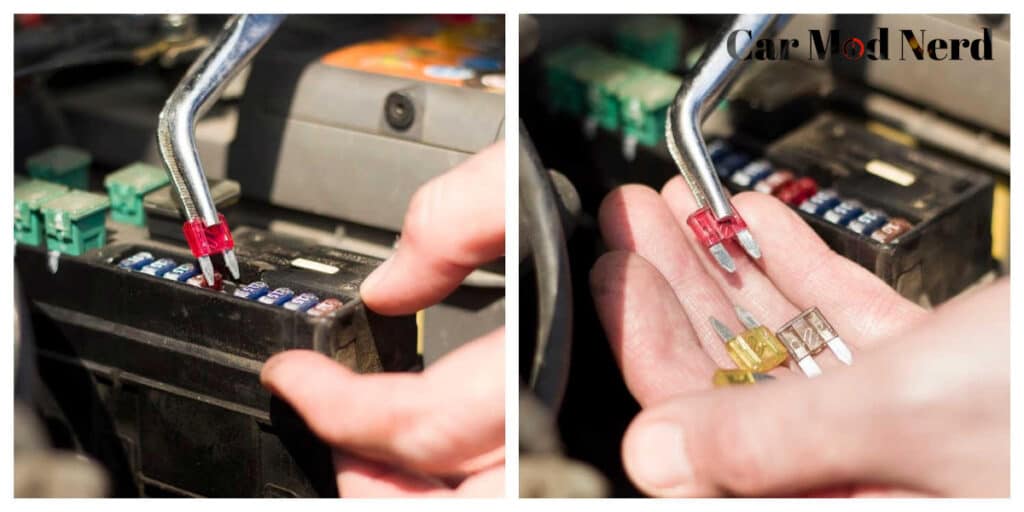
Sometimes, the fuse might get damaged due to a power surge. Overtime also, the fuse tends to become brittle, wear out, and get damaged. When these happen, the current will stop flowing to the battery from the alternator, causing your car’s battery not to charge. First thing I do is, test the battery health status before digging deep. And also check if my specialized battery charge controller is performing well.
How To Detect blown alternator fuse Issue
If your battery doesn’t start, how do you diagnose that the problem is a damaged or a blown fuse? Follow the steps below:
- Switch off your ignition and open the bonnet.
- Locate the fuse box. Use your car’s manual to get the exact location of the main fuse box.
- In your car’s manual, a diagram would help you identify each of the fuses in the fuse box. Carefully pay attention to the diagram and don’t get confused because most modern cars contain over 40 fuses.
- Locate the fuse connected to the alternator, pull it out with a fuse plier, and visually examine it.
- If you notice a melted wire on the fuse, then it’s clear that the blown or damaged fuse is the cause of your new battery not charging.
Step By Step Guide On How To Fix blown alternator fuse (DIY)
After verifying that the problem is from a blown or damaged fuse, replacing the fuse is the only solution. Follow the steps below to change the fuse:
- After pinpointing the exact blown fuse connected to the alternator, replace the fuse. Ensure that the new fuse you’re getting is of the same voltage and type as the one you’re replacing. Replacing the damaged fuse with a different voltage and type can damage the alternator.
- Make sure the new fuse is well fitted in place of the old one. Compare with the fuse next to it, to be sure it’s properly fitted. Learn how to do it here.
- Restore the fuse box to its normal state, and don’t forget to scan and test the electronic system before switching on the engine.
Issues With The Terminals/Wirings Connected To Your Battery
If your car’s alternator is working well, and you just got a brand-new battery. Still, your car’s battery isn’t charging, the problem could probably be from the terminals or wirings connected to your battery.
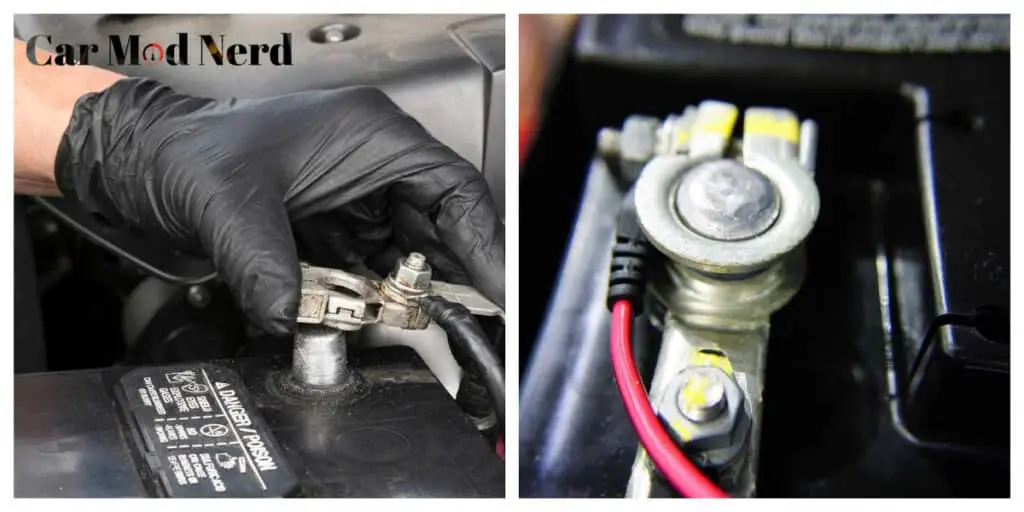
The battery has about three to four wires connected to it. These wires help to transmit the necessary power from the alternator to charge the battery.
As your car ages, the battery terminals may become corroded, causing the battery not to charge. Also, it may be due to loosened or poor connections of the wirings.
You may not know if your car battery is getting the charge as recommended without checking every now and then or installing an automatic controller with remote notification.
How To Detect Degraded Terminals/Wirings Issue
In modern vehicles, it is tough diagnosing if the charging problem is from the wires or terminals connected to the battery because the battery is usually embedded in tight areas in the engine bay. Car scan tools come in handy in such complex diagnosis. And the right repair manual can help you through as well.
You might need to remove a few plastic coverings before you’ll be able to access the battery. Make sure you check the manufacturer’s handbook.
- With a quick visual examination, you could determine if the problem of your car’s battery not charging is from the terminals connected to the battery.
- A quick visual examination would help you determine if the problem is from the wirings themselves. However, it’s less likely to be the case because the wirings connected to your battery are usually firm and dependable.
- Also, check for the voltage drop along the wires using a specialized voltmeter or a multimeter.
Follow the steps below:
- Set the multimeter to voltage.
- Switch on your car and let the engine idle.
- Take each wire, and measure the voltage.
- If you obtain a voltage reading of over 0.2 volts across any wire, that’s a sign that there’s a problem with that wiring connection.
Step By Step Guide On how to wire an alternator to charge a battery (DIY)
- If the problem is diagnosed to be your terminals or wires being corroded, use sandpaper and a wire brush to clean the corroded surface to obtain a clean, fresh metal surface again.
- Tighten all wiring connections properly if loose.
- If the problem is from the wirings, replace them.
- Make sure you attain a voltage drop of 0 or less than 0.1 when fixing the wires.
Again, don’t forget to scan the entire car electronic system after performing these steps. Here’s how to do the scan.
Are you using the wrong antifreeze coolant ratio? See details here.
Poor Voltage Regulator Causing New Alternator Not Charging Battery
Suppose you are sure that your alternator is functioning correctly and the new battery you got is authentic. In that case, a reason why your car’s battery won’t charge could be the existence of a spoilt or damaged voltage regulator in your car’s alternator.
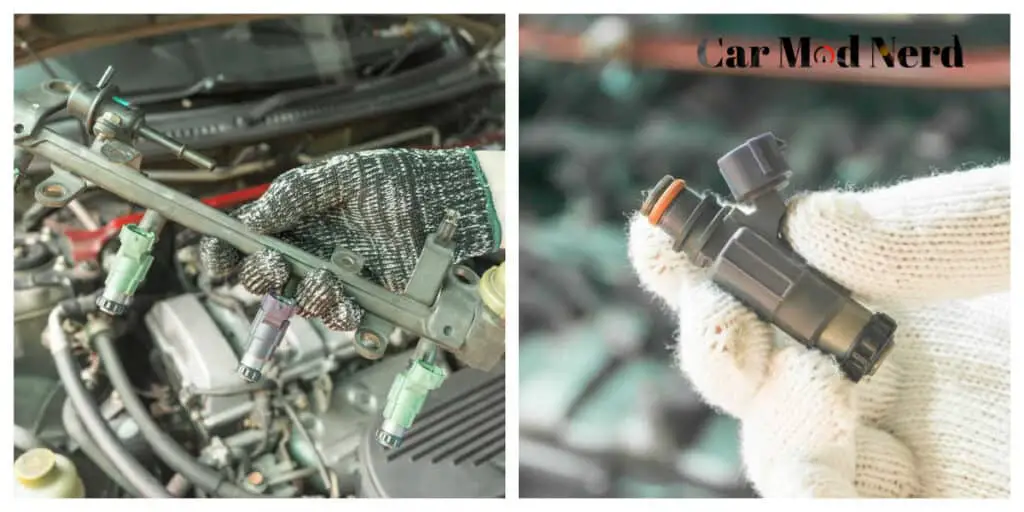
What does a voltage regulator do? The voltage regulator makes sure that an adequate quantity of electrical power flows through all electrical components in your car. When there’s a problem with the voltage regulator, the electrical system will experience difficulty functioning, that’s if they work at all.
The voltage regulator helps to maintain a predetermined charging voltage for your car’s battery. The voltage regulator is usually found on the body or inside the alternator framework.
When your voltage regulator has a problem, it’ll prevent the alternator from charging your car’s battery, and soon enough, your battery would die.
Using the right headlight bulb can save you from the expensive alternator and battery replacement. Here’s my guide on H1 bulb for deeper understanding.
That fault code is a turning point. If repair costs are climbing and your current loan feels like it’s holding you back, this is the time to plan ahead. The free Car Loan Payment Tracker helps you see how quickly you can pay off what’s left—and start preparing, with confidence, for your dream car.
How To Detect Degraded Poor Voltage Regulator Issue
Are you suspecting the voltage regulator to be the cause of your battery not charging? How do you check out the voltage regulator? With an automotive multimeter, you could test the voltage regulator connected to the alternator to determine if the problem is from the voltage regulator. Follow the steps below:
- Set your vehicle to neutral.
- Open your bonnet.
- Make sure you set to multimeter to voltage.
- Locate your car’s battery, and if there’s a plastic bag on the terminals, lift it.
- On the multimeter, you’ll see a red and black cord with clamps attached at the end. Affix the red clamp to your battery’s positive terminal, then affix the black clamp to your battery’s negative terminal.
- Note the reading on the multimeter. While the car is off, the reading should be around 12.5 to 12.8 volts.
- Switch on your car and take the reading on the multimeter. With the car switched on, the reading should be around 13.8 volts.
- Another person should help you rev the engine while looking at the reading on the multimeter. While your car is still in park, the person should increase the RPM of your car to about 1500-2000RPM, also note the reading on the multimeter again.
- If the multimeter gives a reading above 4.5 volts, you have a faulty voltage regulator.
Step By Step Guide On How To Solve Poor Voltage Regulator Issue (DIY)
Suppose your voltage regulator has been diagnosed as faulty. In that case, you should adjust the voltage output on the regulator or replace it.
- If your car has an adjustable voltage regulator (check your car’s manual for this), locate the adjusting screw on your alternator and modify the charging voltage output to standards.
- To replace the regulator, remove the voltage regulator on or inside the alternator. Check your car’s manual for the correct procedure to replace the damaged voltage regulator for your car.
Never use the wrong engine oil grade for your precious vehicle. Here’s my detailed case study.
Damaged Serpentine Belt Causing Alternator Not Charging Battery
If you look closely at the alternator, a pulley and belt system would be noticed. The belt here is referred to as the Serpentine belt. The pulley and serpentine belt system convert mechanical energy to electrical energy.

Earlier, I pointed out that this serpentine belt is responsible for driving the alternator in your car. Over time, the serpentine belt, made of rubber, can get worn out or damaged from factors like overheating, wear and tear.
When the serpentine belt gets worn out, it could break and could also become slack. When it becomes limp, its grip on the alternator pulley won’t be firm, causing the belt to slip. This would deprive the alternator of getting fast, adequate power to keep pace with the orders of your car’s electrical system.
How To Detect Damaged Serpentine Belt Issue
Most times, a screeching sound from the pulleys in your engine would forewarn you that your serpentine belt is failing.
Also, by a quick visual examination, you’ll notice the serpentine belt slipping. Slipping of the serpentine belt would cause your alternator to not spin very well with the engine. This may be the source of your battery’s charging issue.
Step By Step Guide On How To Solve Damaged Serpentine Belt Issue (DIY)
If the problem has been diagnosed from your serpentine belt, you’ll need to replace your serpentine belt. Unfortunately, there’s no bad alternator quick fix in this scenario. It usually costs between $25 – $75. Follow the steps below to replace the serpentine belt:
- Park the vehicle on a flat surface and switch off the engine.
- Put on your personal protection equipment (gloves, goggles, etc.)
- Open the bonnet, and remove all plastic coverings, etc., preventing access to the engine
- There’s a belt tensioner under spring tension, which helps to secure the belt firmly. Locate this belt.
- Use a wrench to loosen the belt tensioner.
- After releasing the tensioner, remove the damaged serpentine belt from the pulley.
- Make sure the new serpentine you are about to install has the exact specifications as the removed one. Learn how to check compatibility here.
- Install the new serpentine belt onto the pulleys.
- Make sure the pulleys align well with the grooves of the belts.
Check The New Battery You Got
You’re sure your alternator is working perfectly, and you just replaced your old car’s battery with a brand new one, and still, the battery isn’t charging; the problem could be from the new battery you got. They might have sold a bad battery to you, or probably something drained the battery. Sometimes, new components fail, so double-checking won’t hurt you at all.
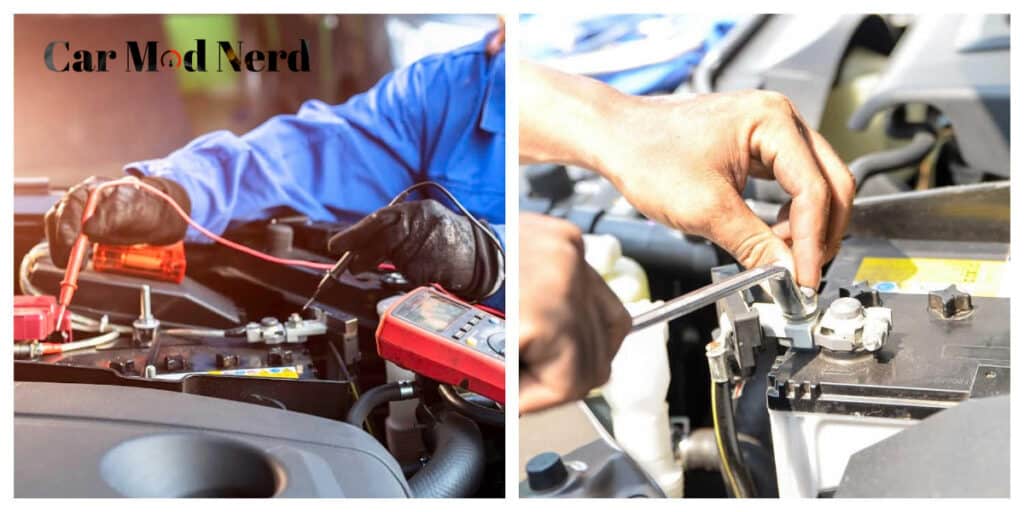
Also, after-market accessories might be the cause of your drained battery. Some accessories include; Bluetooth kits, radio, horns, GPS, charging outlets, security, music system, etc. They can drain your car’s battery if not properly connected to your car’s electrical system or if all are left turned on while your vehicle is turned off. That’s when my wireless battery health monitor comes in handy.
How To Detect Damaged Battery Issue
With a specialized automotive multimeter or a voltmeter, you can determine your battery’s current to be sure of the battery’s condition. When your car’s engine is off, your battery’s voltage should read between 12.5-12.8 volts, and when you switch on your vehicle, the voltage should exceed that point. If otherwise, you probably got a bad battery in your car, or the battery has been drained.
Follow the steps below to determine the current coming from your car’s battery;
- Switch off the headlights or anything that could drain the battery. Read my guide on headlights here for better understanding.
- Connect the positive lead on the voltmeter to the battery’s positive (red) terminal.
- Connect the negative lead on the voltmeter to the battery’s negative (black) terminal.
- Check the reading on the voltmeter. If the reading is less than 12.5 volts, you have a bad battery, or the new battery you got has been drained.
Step By Step Guide On How To Solve Damaged Battery Issue (DIY)
If you’ve diagnosed your battery’s charging issue to be from the battery itself, you might need to replace the battery. Most batteries can’t be serviced.
- If the battery has been diagnosed to be drained, you can jump-start it to recharge the battery.
- If after a jump start, the new battery you got doesn’t get recharged, the battery is bad. You need to replace it!
Always use the best engine oil. Here’s my guide on finding the best oil for Ford.
How The Alternator And Battery Work
The alternator is an integral part of the electrical system in your vehicle. The Alternator and the battery work together to ensure that the necessary power needed for the effective running of all electrical components in your car is supplied. The alternator is the electrical powerhouse in your vehicle. The alternator performs the duty of charging your car’s battery and supplying adequate electrical power to run your vehicle. You can enhance the alternator’s performance by adding an efficient charge controller in between.
The alternator is fastened onto your car’s engine via bolts and nuts and driven by a serpentine belt. The alternator of your car should last for about 10-20 years before needing to change it. Failure of the alternator would lead to the collapse of the electrical systems, which would lead to your battery not running properly. However, if your alternator is brand-new or working perfectly, and yet your car’s battery isn’t charging, several reasons might cause that. Let’s look at some alternators then.
New Battery New Alternator Still Not Charging FAQ
This blog post contains five common reasons why a car’s battery won’t start after getting a new alternator. Here are the statistics of a car’s battery that won’t charge after getting a new alternator:
- 60% of the time, the battery is the culprit.
- 40% of the time, the alternator’s voltage regulator is the cause. Once you notice your car’s battery is having issues, it’s important to address it as soon as possible as the consequences can be dire.
Don’t forget to look for fuse, connecting terminals and wiring, voltage regulator, serpentine belt issues as well.
Now you what happens when you get a new battery new alternator still not charging and how to diagnose and fix it. Read my blog on oil leaks and cam phaser before leaving.

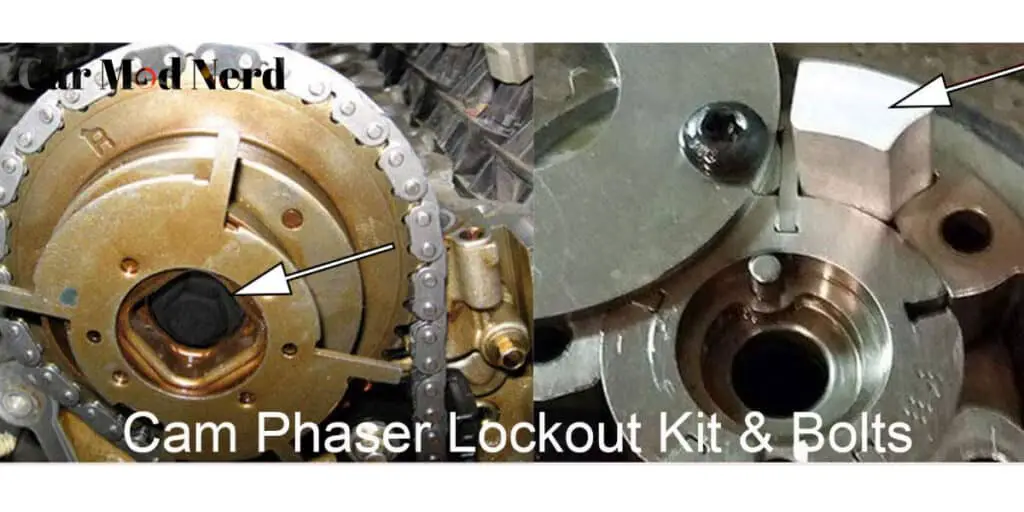
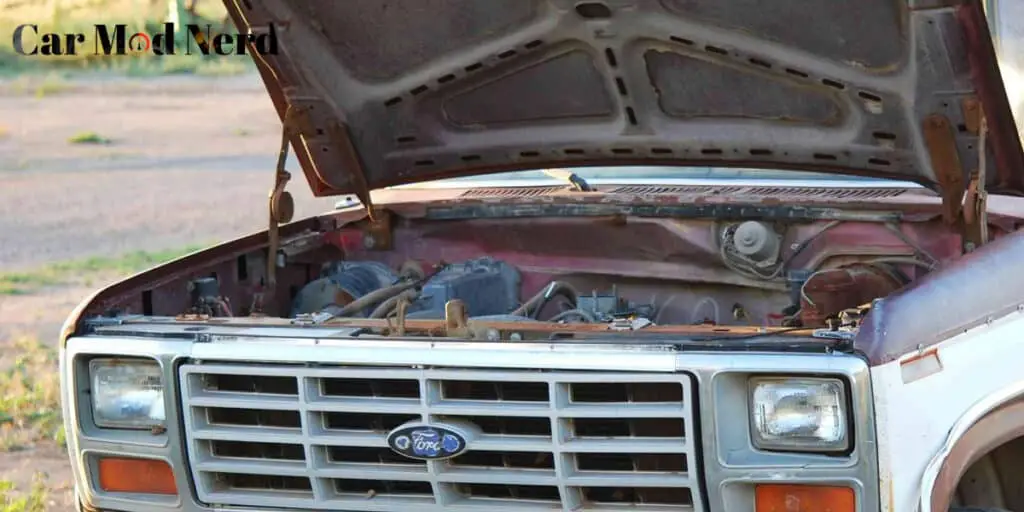
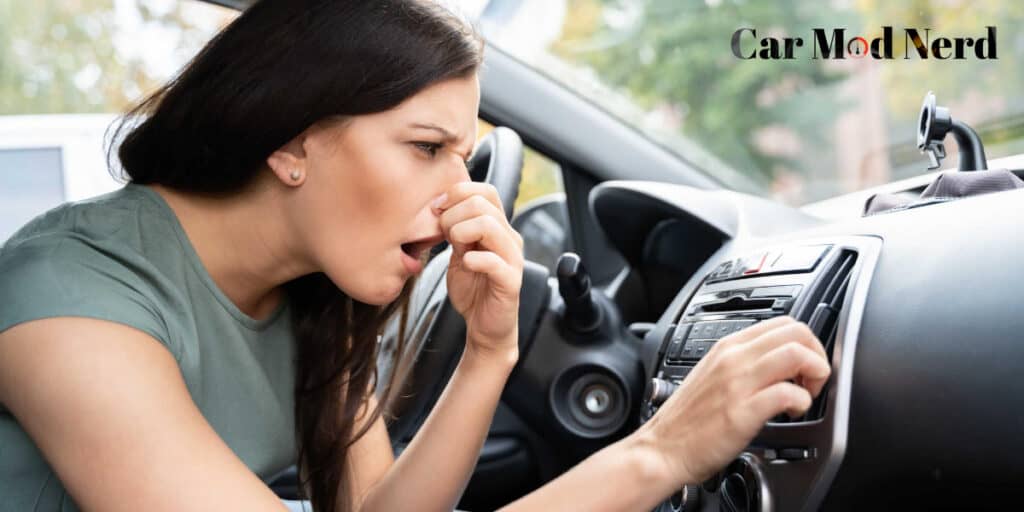
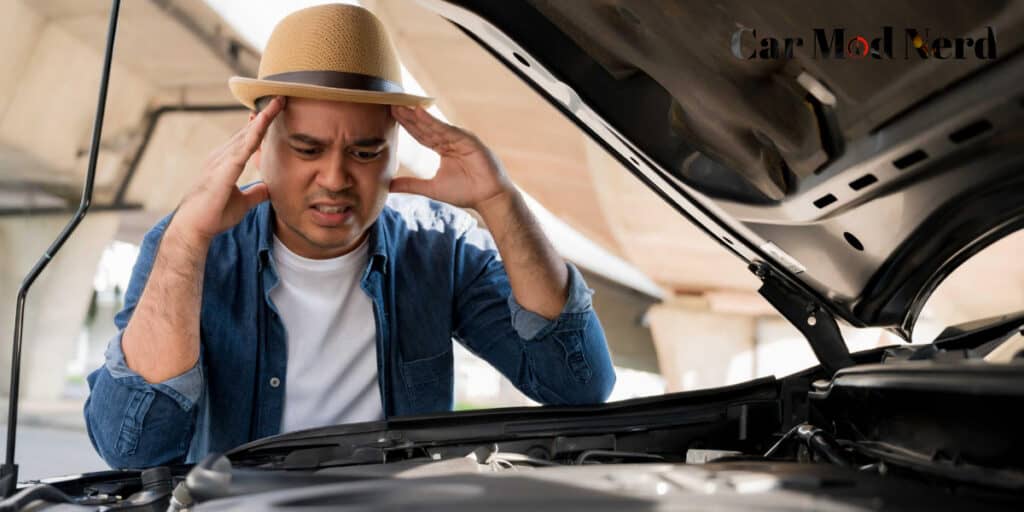

I can agree, that after getting a new alternator and not a new battery, that 60% of the time, the battery is the problem. My issue, is that the voltage regulator on a brand new alternator is the problem, the other 40% of the time. This statement at the end, leaves no room for any other issue being the problem. You do mention other potential issues in you article, but not at the end. I don’t understand why you would even add an incomplete summary at the end. It’s going to confuse people that skip to the summary, or don’t know enough about cars to know any better. A thanks for addressing the issue though.
Hi Eric,
Thanks a lot for pointing that out. I’ve just updated the blog and added other potential issues in the summary. Really appreciate your comment. Please read my other posts and let me know your feedback. I’d love to hear from you again. Thanks a lot.